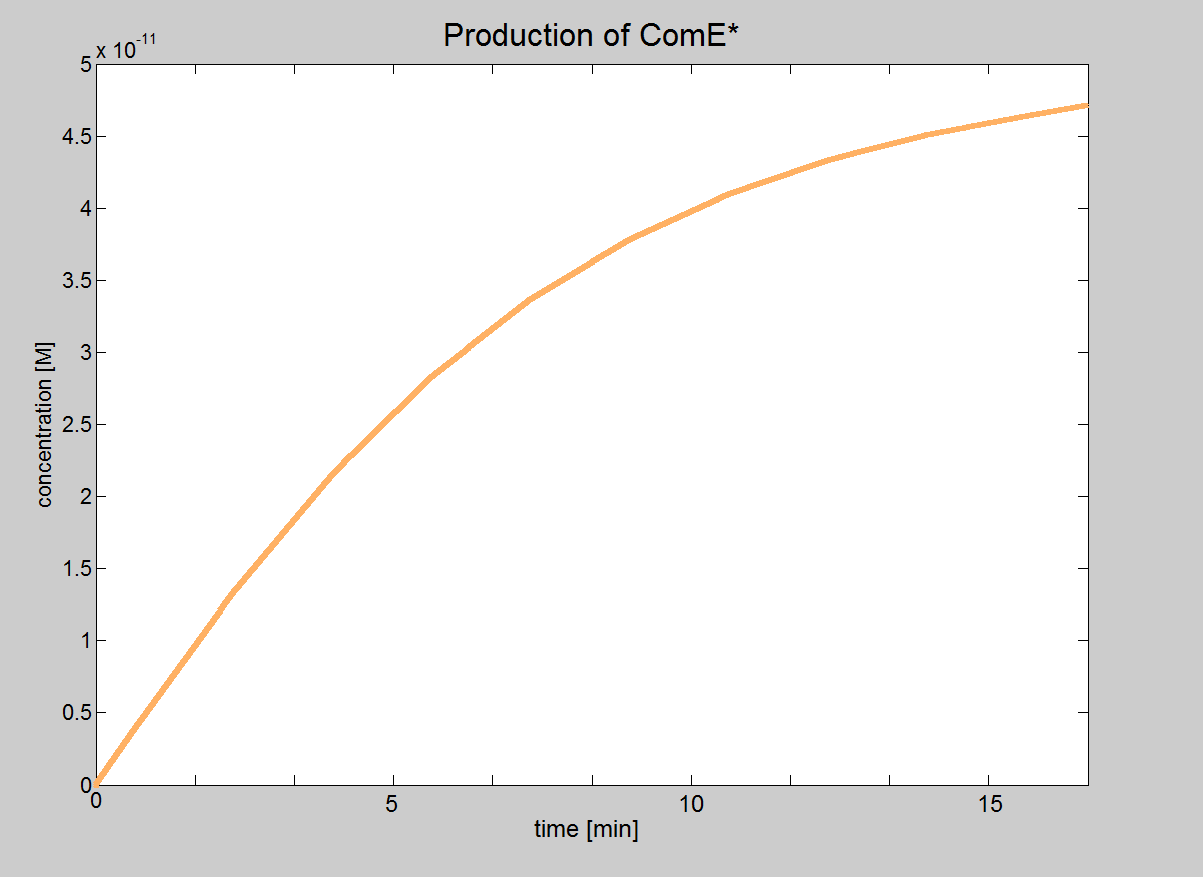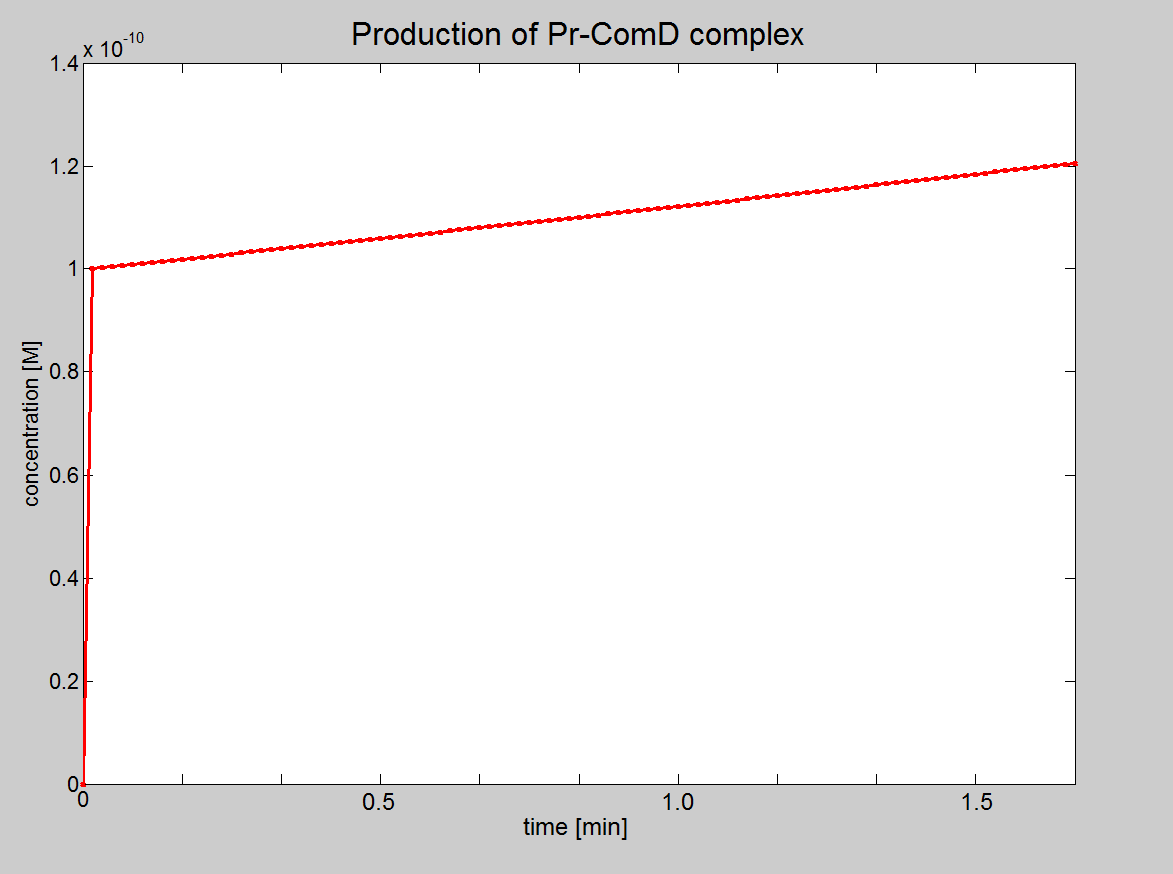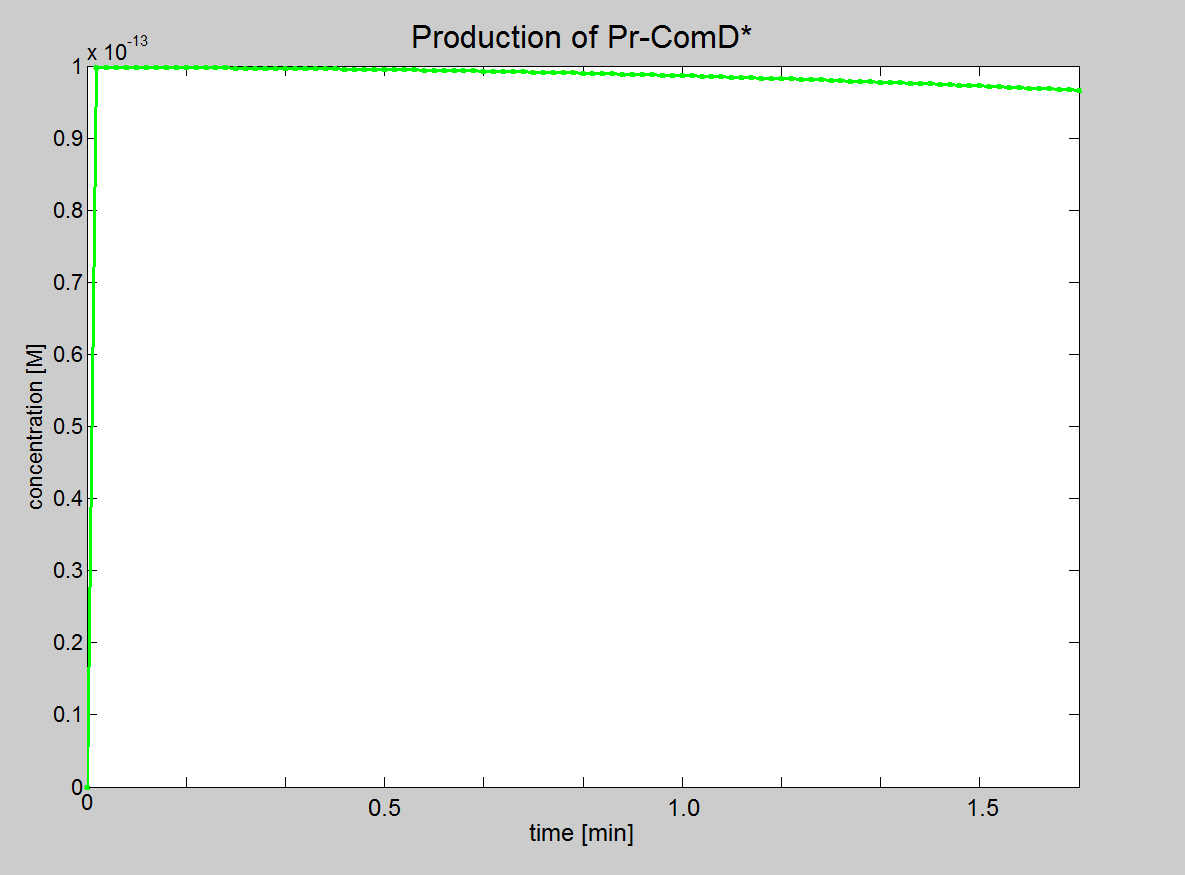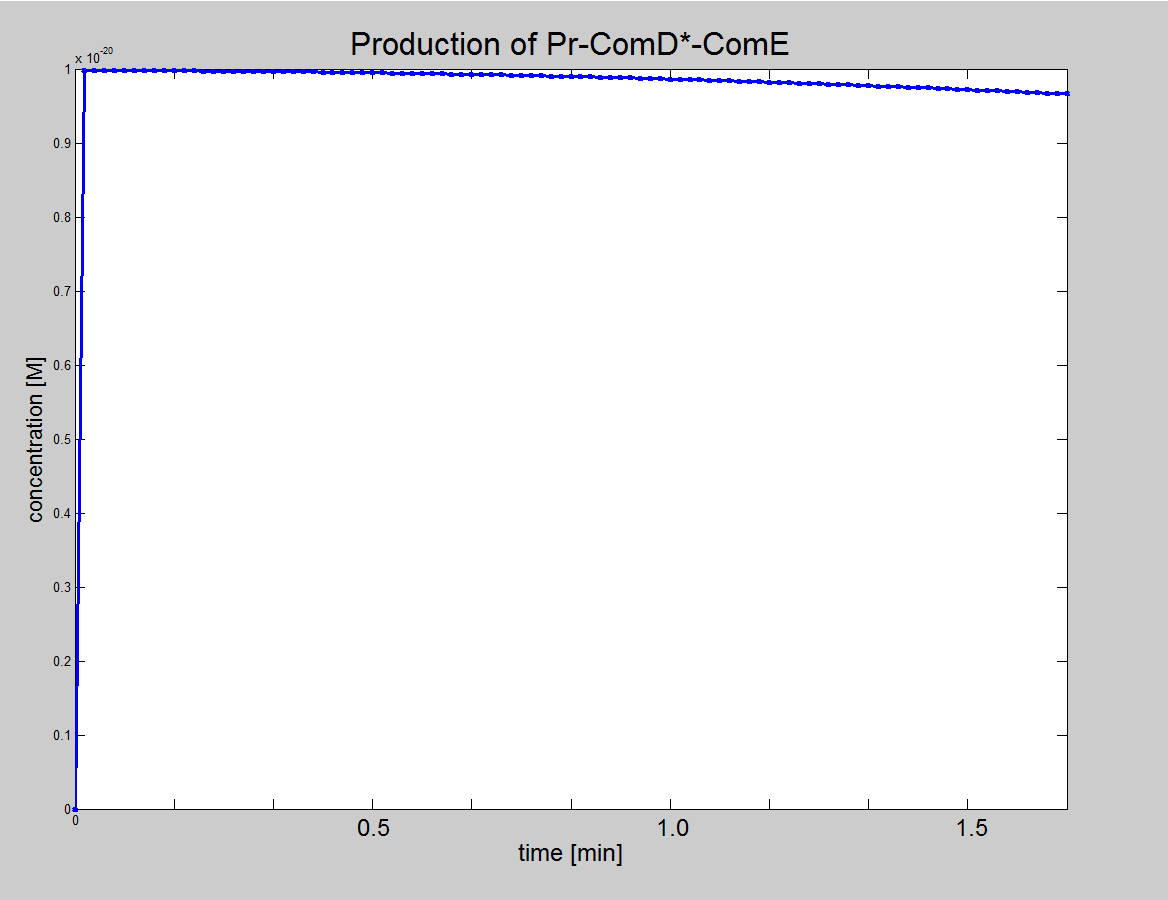| Results and Conclusion
|
| Using this model, we can show that the phosphorylated, ComE*, is proportional to both initial concentration of AIP and ComD.
If the initial concentration of AIP or ComD is zero, there is no formation of ComE*.
We are assuming an initial concentration of Phosphate and ComE of 100nM.
If we change either [AIP]0 or [ComE]0, then the final concentration of ComE* will always tend towards 5×10-11M. [ComE*]final will always tend towards this value, unless the initial concentrations of Phosphate and ComE are changed. However, if we increase both [AIP]0 and [ComE]0 at the same time, then [ComE*]final will be reached much faster (i.e. slope increases).
|
| Equation: AIP-ComD*-ComE ↔ AIP-ComD + ComE*
|

|
| Graph showing how [ComE*]final eventually reaches the value 5×10-11M.
|
|
  
|
| 1. Graph showing the production of Pr-ComD complex. (Equation 1: AIP + ComD ↔ AIP-ComD).
|
| 2. Graph showing the production of phosphorylated Pr-ComD* complex. (Equation 2: AIP-ComD + Phosphate ↔ AIP-ComD*).
|
| 3. Graph showing the production of Pr-ComD*-ComE complex. (Equation 3: AIP-ComD* + ComE ↔ AIP-ComD*-ComE.
|
| Notice the steep increase of concentration for each of the graphs, which could be due to high k1,2,3 values.
|
|
| Click here for the constants of this model...
|
 "
"







